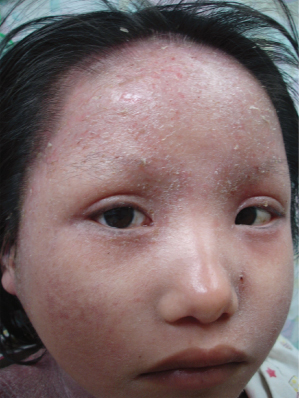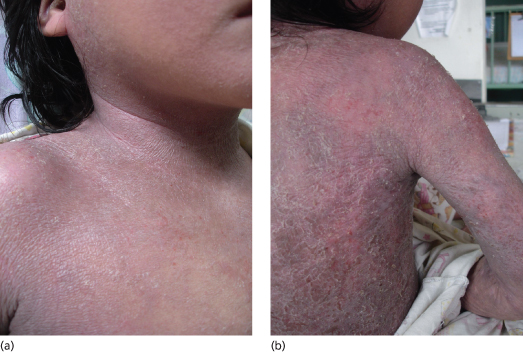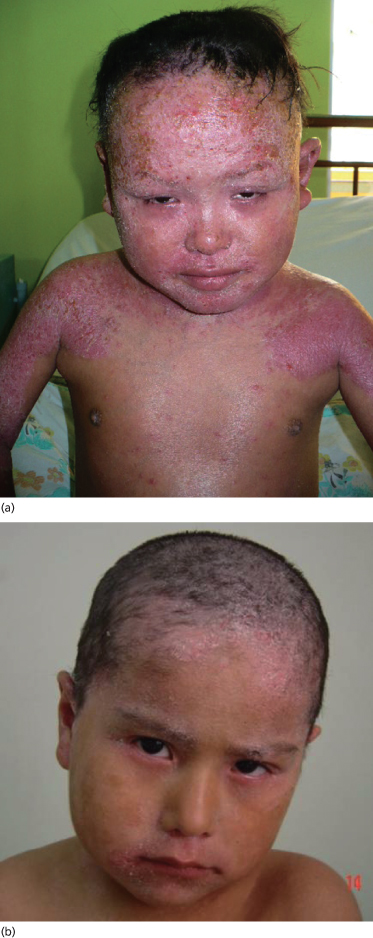Clinical Features.
Infective dermatitis begins with rhinitis which resembles a common respiratory infection. This is followed by a generalized erythematous eruption, with crusting in the nares and an exudative eczematous dermatitis affecting the scalp, earlobes, neck, axillae, and inguinal and periumbilical skin. The disorder is associated with variable degrees of pruritus and regional lymphadenopathy [9] (Figs 53.2–53.4).
Diagnosis.
In most cases, diagnosis is suspected well before the performance of serological testing. ID is always associated with staphylococcal and streptococcal infection.The diagnosis is now based on the diagnostic criteria delineated by LaGrenade (Box 53.1).
Box 53.1 Diagnostic Criteria for ID According to LaGrenade
Major Criteria (1,2, and 5 are required)
• Eczema of scalp, axillae, groin, external ears, retroauricular skin, eyelids, and skin around the nose and/or neck. (Two areas are required.)
• Watery chronic nasal discharge without other signs of rhinitis and/or desquamation of the nares.
•
Stay updated, free articles. Join our Telegram channel

Full access? Get Clinical Tree











